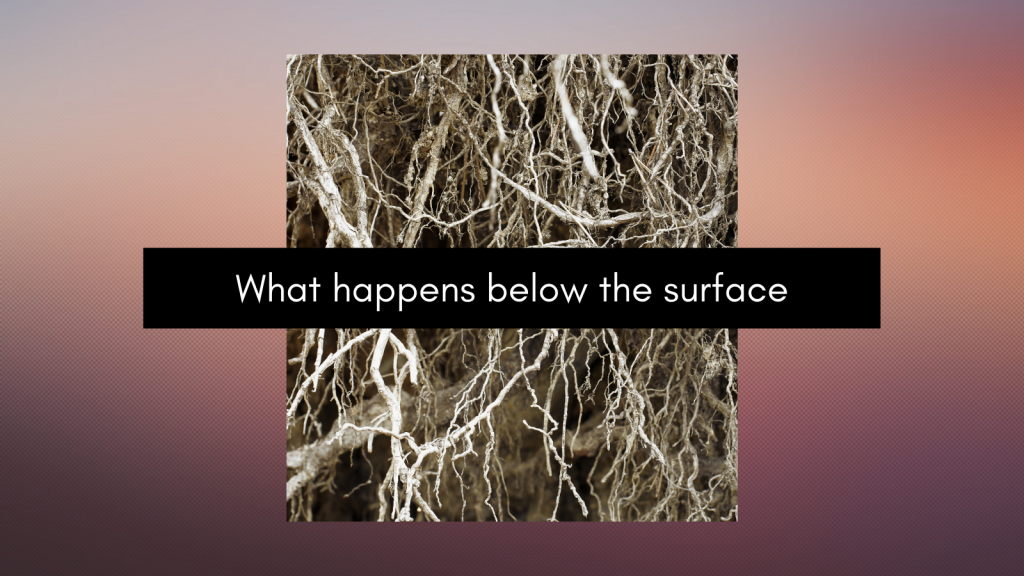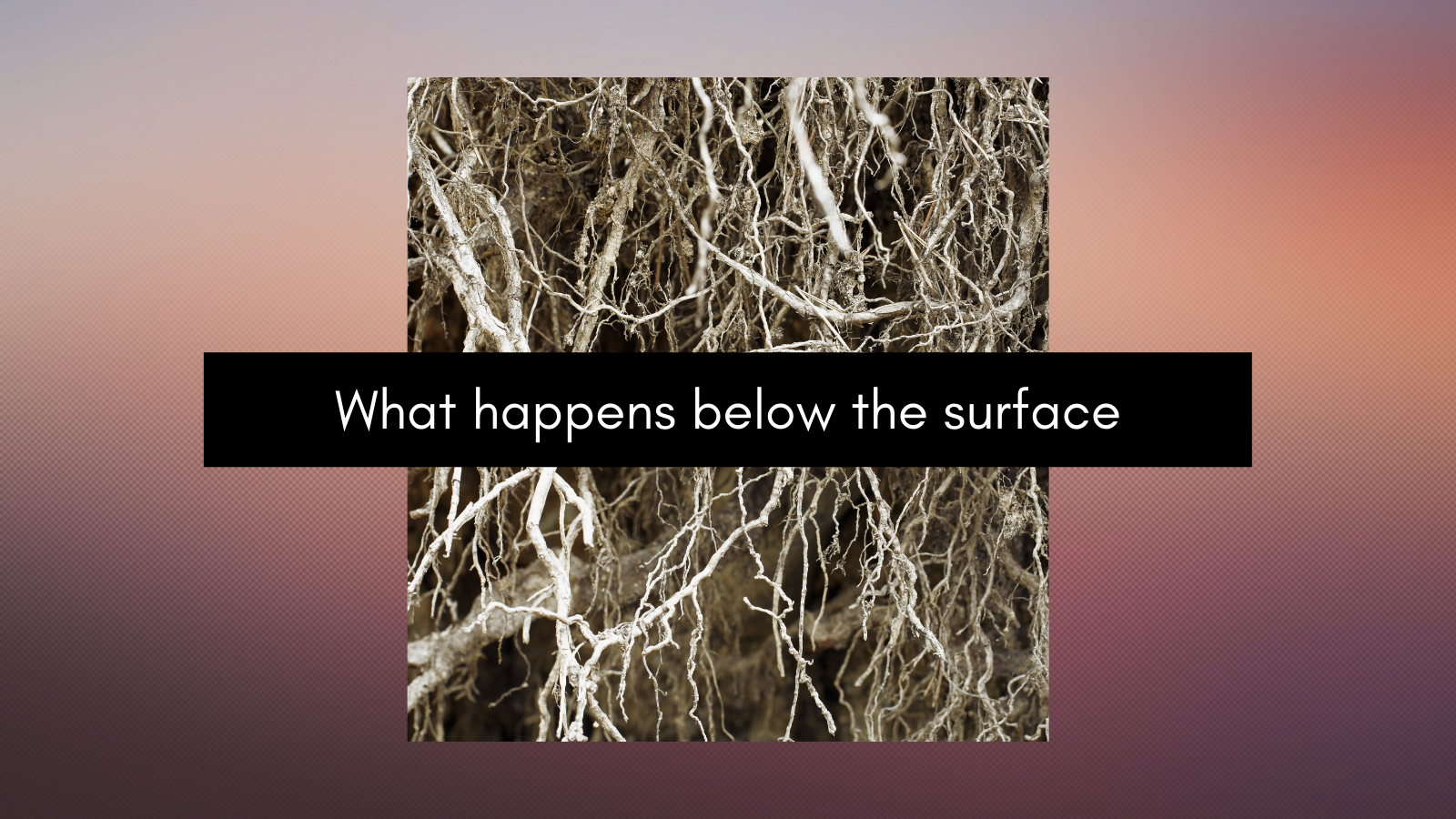
There’s so much that happens below the surface of the soil. There is an entire ecosystem within the rich earth that we grow crops, grass, and trees in. Below are just a few examples of the diverse life that can be found beneath the surface.
Earthworms: Earthworms are “nature’s tillers”. They eat their way through the soil making burrows which increase water infiltration and make room for plant roots to reach deep into the soil. Poop might be gross, but earthworm poop adds a lot of good bacteria, organic matter, and nutrients that plants can use right away into the soil. Tillage is the biggest “bad guy” when it comes to earthworms, and certain fertilizers and insecticides can greatly harm these beneficial animals.
Ants: Ants are arthropods which means they are animals that have a hard exoskeleton. You can find ants all over the world. They form large colonies that make their homes underground. These nests and the tunnels that connect to them allow increased air and water movement throughout the soil. Ant nests also make microbes happy which results in more available nitrogen.
Protozoa: Protozoa are microscopic, but they are still bigger than bacteria, protozoa’s main source of food. Protozoa can impact the amount of organic matter and nutrients available to plants by how much bacteria they eat. Protozoa can take on several shapes. Some are amoebas which move by getting big and then small again. Some have little waving hairs called ciliates, and some move with a flagellum which spins like a whip or a tail.
Nematodes: Nematodes are microscopic worms that live in tiny air and water filled pore spaces in the soil. They eat all kinds of things like fungi, bacteria, algae, other nematodes, protozoa, and insect larvae. Some types of nematodes feed on plant roots which can harm crop growth. Even though some species of nematodes are pests, others are not, and they actually help the release of nitrogen that the plant can easily use. Some species even prey on harmful insect pests.
Fungi: There are at least 1 million fungal species present in the soil. Mushrooms are a type of fungi. They do a really good job of breaking down dead plants and animals which put nutrients into the soil. Fungi helps to stabilize the soil structure and is good at cycling nutrients.
Grubs: Grubs are beetle larvae, meaning they’re baby beetles. Grubs are worm-like, and they live in the soil. They can be anywhere from ¼ inch to 1 inch long with bodies curved in a “C” shape. Grubs feed on plant roots which can greatly stunt the plants growth. They also eat seeds and seedlings which can keep plants from growing.
Ground nesting bees and wasps: Some bees and wasps live inside the soil by making burrows. One example of a ground nesting wasp in a Cicada Killer. These large wasps can be 2 inches long. They dig burrows into the soil that can be 12-18 inches long and 1 ½ inches wide. Cicada Killers paralyze cicadas and lay eggs on them to feed their larvae. These insects do not colonize, but Cicada Killers will often burrow near each other. The males cannot sting, and the females will only sting if they are mishandled.
Annual Cicadas: Cicadas spend their adult lives above ground, but they spend their time as nymphs in the soil. Cicadas lay their eggs in tree branches. When the eggs hatch, the nymphs fall to the ground where they burrow into the soil and feed on plant roots. This can cause damage to young trees and plants. After two years of living in the soil, the nymphs, which look like adult cicadas but without the wings, will emerge from the soil and molt to become a fully formed cicada.
Mole Crickets: Mole crickets have large front legs that they use for digging. Much of their life is spent in the soil. Mole crickets hatch as nymphs, looking very similar to adults, and they dig around in the soil looking for food. Although they spend some of their adult life outside of the soil, they return to the ground in winter. These insects’ tunneling can cause a lot of damage to turf grass, but they can also increase soil aeration and infiltration.
Moles: Moles are insectivores, and they can grow from 5 to 7 inches long. They spend most of their lives in the soil. They have small eyes and ears that are protected by fur. Underground, they don’t have much need for eyesight. They have large claws which help them dig through the soil. Moles can benefit the soil by increasing aeration and infiltration. They help organic matter to travel deeper into the soil, and for subsoil material to move closer to the surface bringing nutrients along with it. Although they can add benefits to the soil, many homeowners find moles a nuisance.
Resources:
Brady, N. C., & Weil, R. R. (2010). Elements of the nature and properties of soil (3rd ed.). Upper Saddle River: Pearson.
https://extension.entm.purdue.edu/fieldcropsipm/insects/soybean-white-grubs.php
https://extension.entm.purdue.edu/publications/E-63/E-63.html

